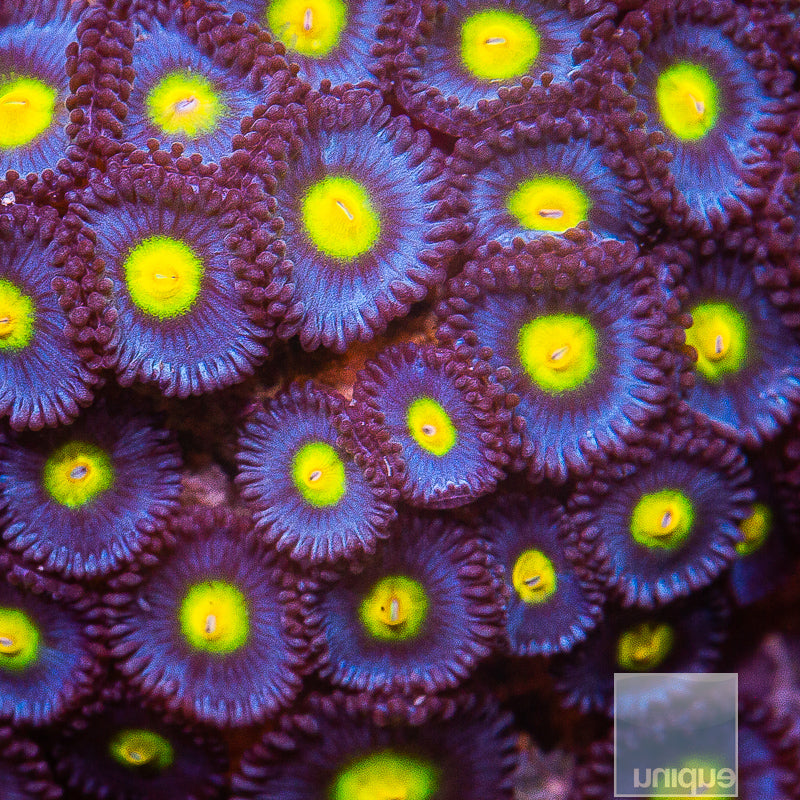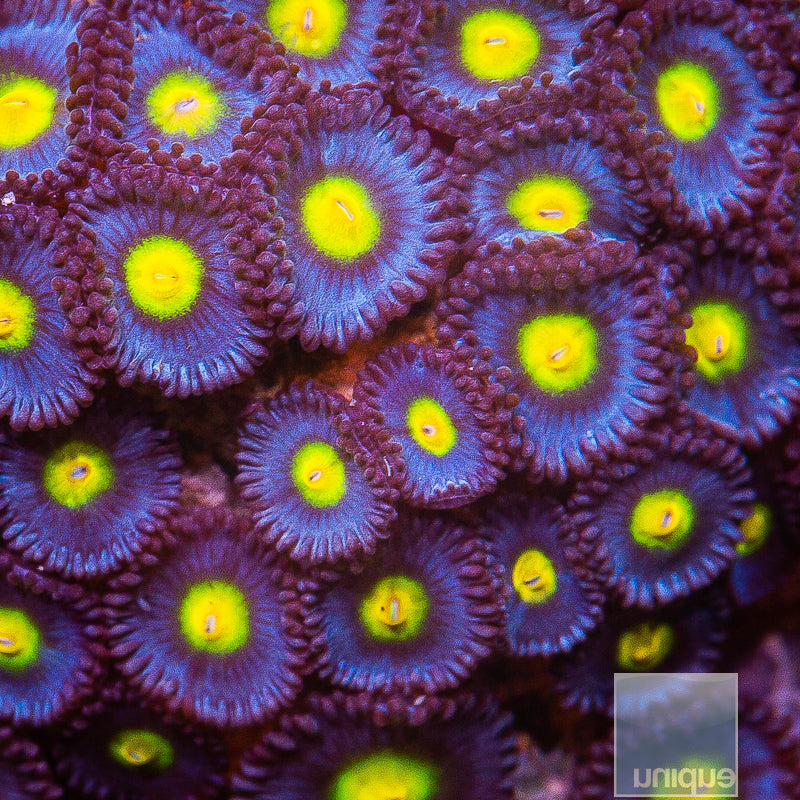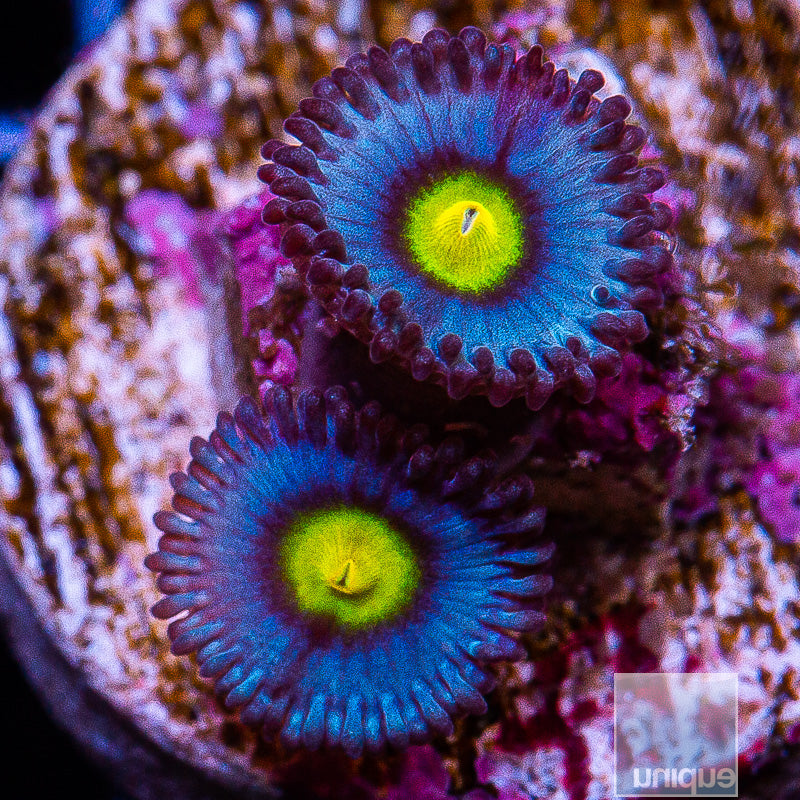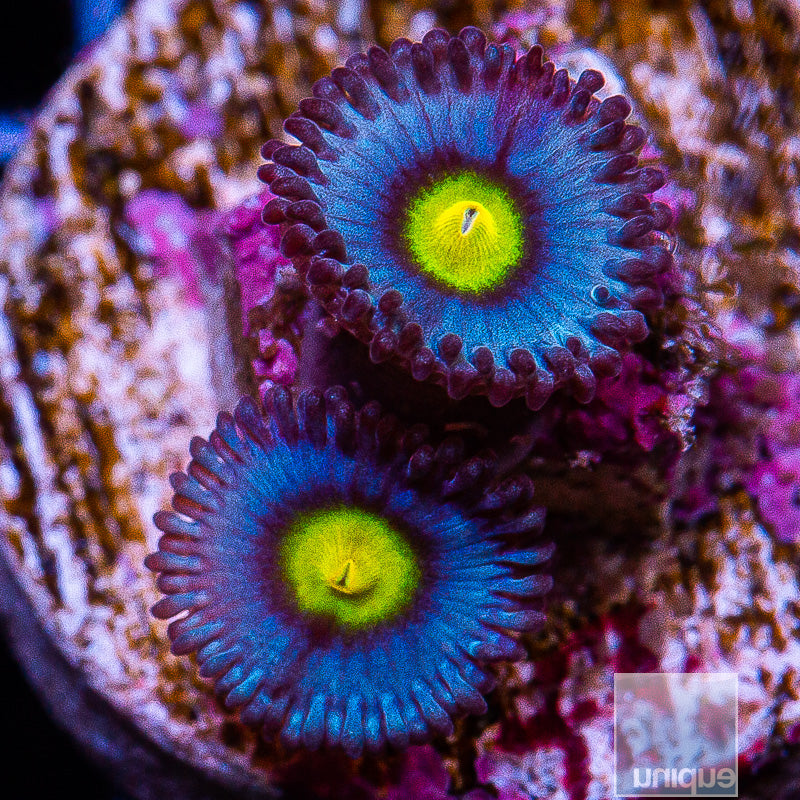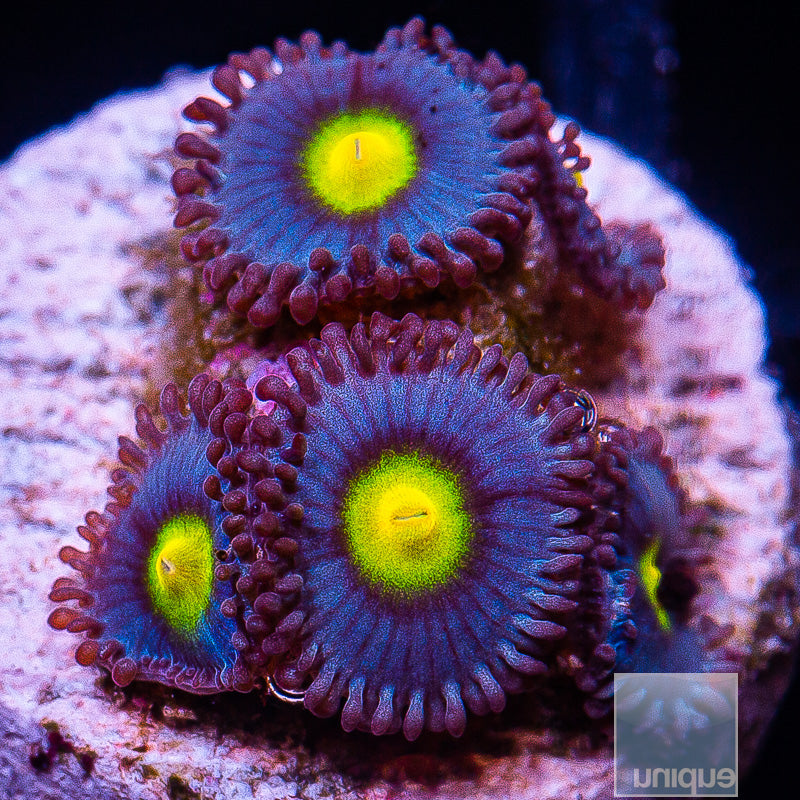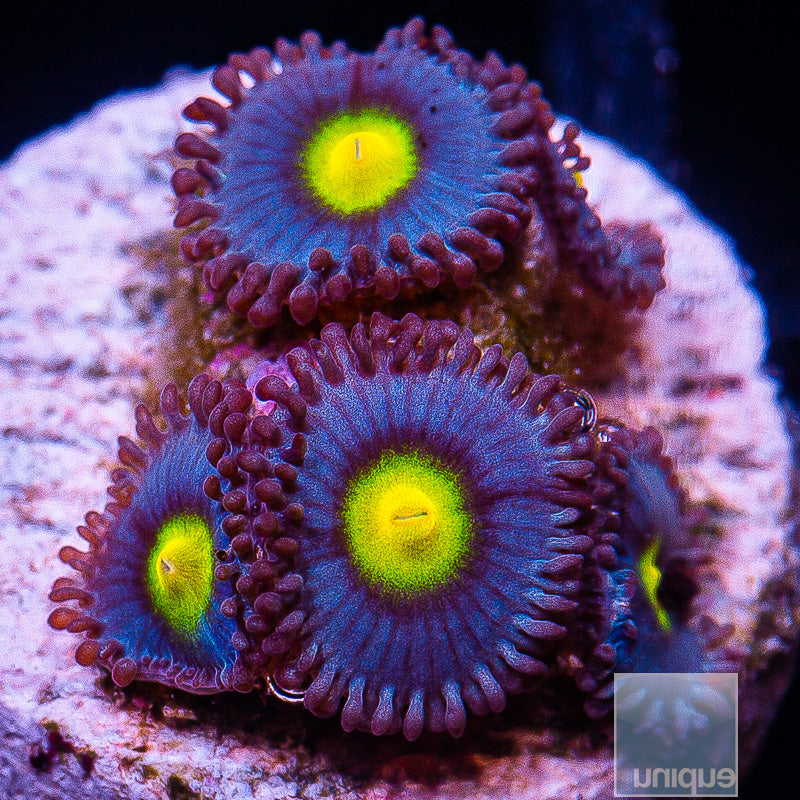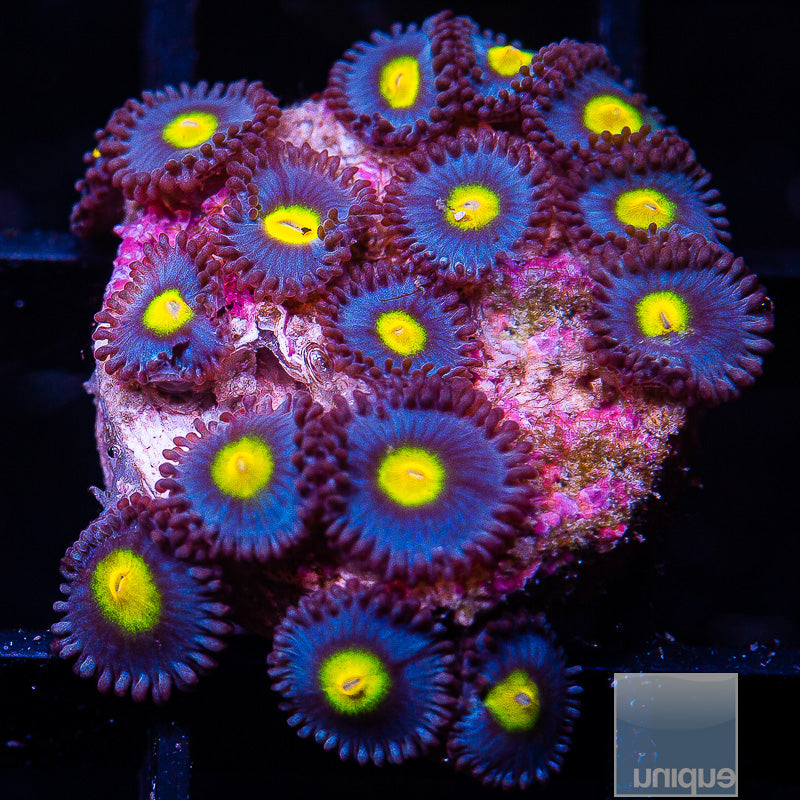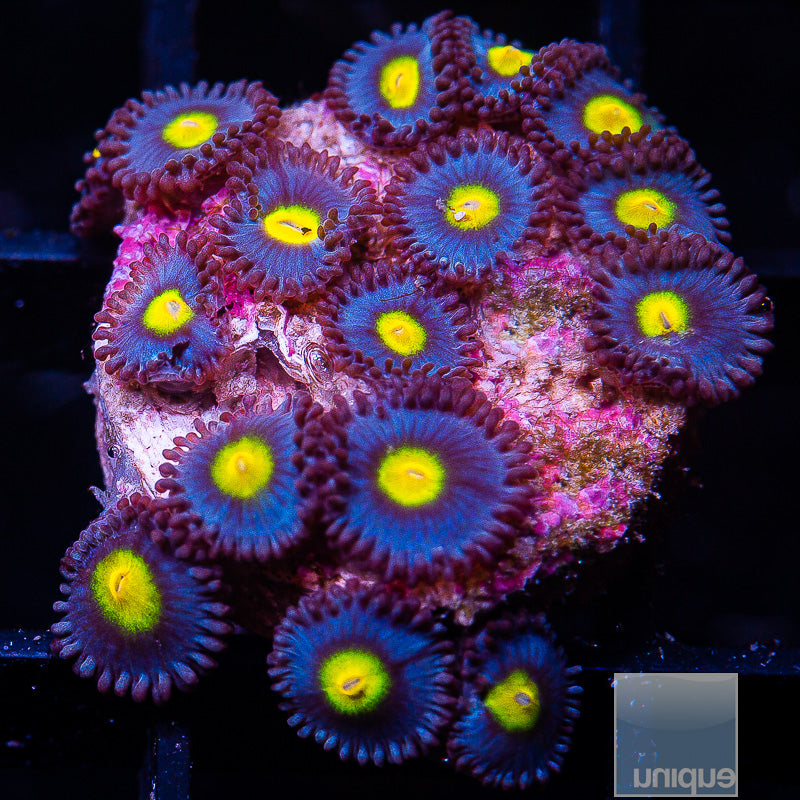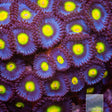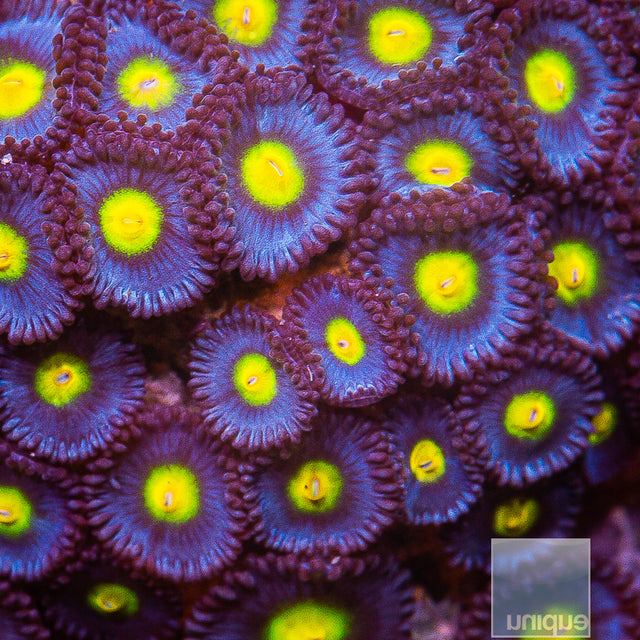WWC AOI Zoanthid- Stock Frag 3 Polyp
WWC AOI Zoanthid- Stock Frag 3 Polyp - 3 Polyp is backordered and will ship as soon as it is back in stock.
Couldn't load pickup availability
Unique Corals Aqua-cultured, healthy and colorful! Tank hardened.
Lineaged to World Wide Corals the AOI zoa is a great way to add a pop of blue to any system. AOI is the Japanese word for "green-blue". Despite this many people call these zoas "A, O, I's".
Zoanthids are an easy to care for soft coral. These corals do best in low par (sub 50 depending on the strain) and with high flow. While they can live in low flow overtime this tends to cause issues as waste will build up on their mat. Thus, for optimal health place them in high flow, low light locations. This helps to mimic their natural environment in tide pools and areas along the waters edge that are high in nutrients, turbid and ripping with flow.
To pronounce this corals name watch here: https://www.youtube.com/watch?v=3vSF7Ok94qc
Video of the coral: https://youtube.com/shorts/u2DMGjeiaes?feature=share
CARE LEVEL: Softie-Beginner
TEMPERAMENT: Semi-Aggressive
PLACEMENT: On Rockwork or Rubble
WATER MOVEMENT: Low to High
LIGHTING: Low to Moderate
HUSBANDRY NOTES: Zoa/Paly- We keep our corals under Dalua/Illumagic X4 LED lights with an intensity of approximately 100 PAR and feed regularly with Polyp Lab Reef Roids and BenePets.
Note: This is a stock item. No more waiting for frags to heal! If this coral shows in stock it is ready for immediate ship-out. We have added multiple growing systems in order to help us achieve a better grow-out supply. This means that we are now proud to be able to offer our frags immediately. If you wish to purchase a larger size piece please contact us and we will do our best to accommodate.
You may notice the slight color differences between the videos and stock photos. This is normal. The coral colors in the videos are raw (unprocessed), shot with a cell phone and taken under balanced lighting. The coral colors in the still shots are under bluer lights using a DSLR camera with minimal processing. Happy reefing!
Shown are the mother colony we frag from as well as close up (macro lens) pictures and a representation photo of a typical frag. We aim to make each frag 1” in size and larger when possible. Occasionally the frags might be a tad smaller than 1” but if you read our reviews, you will see that we typically surpass expectations. For Palys and Zoas, each frag will have at least 3 polyps on it.
Key product features
Can be highlighted here.
Description
Description
Unique Corals Aqua-cultured, healthy and colorful! Tank hardened.
Lineaged to World Wide Corals the AOI zoa is a great way to add a pop of blue to any system. AOI is the Japanese word for "green-blue". Despite this many people call these zoas "A, O, I's".
Zoanthids are an easy to care for soft coral. These corals do best in low par (sub 50 depending on the strain) and with high flow. While they can live in low flow overtime this tends to cause issues as waste will build up on their mat. Thus, for optimal health place them in high flow, low light locations. This helps to mimic their natural environment in tide pools and areas along the waters edge that are high in nutrients, turbid and ripping with flow.
To pronounce this corals name watch here: https://www.youtube.com/watch?v=3vSF7Ok94qc
Video of the coral: https://youtube.com/shorts/u2DMGjeiaes?feature=share
CARE LEVEL: Softie-Beginner
TEMPERAMENT: Semi-Aggressive
PLACEMENT: On Rockwork or Rubble
WATER MOVEMENT: Low to High
LIGHTING: Low to Moderate
HUSBANDRY NOTES: Zoa/Paly- We keep our corals under Dalua/Illumagic X4 LED lights with an intensity of approximately 100 PAR and feed regularly with Polyp Lab Reef Roids and BenePets.
Note: This is a stock item. No more waiting for frags to heal! If this coral shows in stock it is ready for immediate ship-out. We have added multiple growing systems in order to help us achieve a better grow-out supply. This means that we are now proud to be able to offer our frags immediately. If you wish to purchase a larger size piece please contact us and we will do our best to accommodate.
You may notice the slight color differences between the videos and stock photos. This is normal. The coral colors in the videos are raw (unprocessed), shot with a cell phone and taken under balanced lighting. The coral colors in the still shots are under bluer lights using a DSLR camera with minimal processing. Happy reefing!
Shown are the mother colony we frag from as well as close up (macro lens) pictures and a representation photo of a typical frag. We aim to make each frag 1” in size and larger when possible. Occasionally the frags might be a tad smaller than 1” but if you read our reviews, you will see that we typically surpass expectations. For Palys and Zoas, each frag will have at least 3 polyps on it.
Reviews (0)
Reviews (0)
Highlight title
Text to highlight a key feature of your product
Highlight title
Text to highlight a key feature of your product
